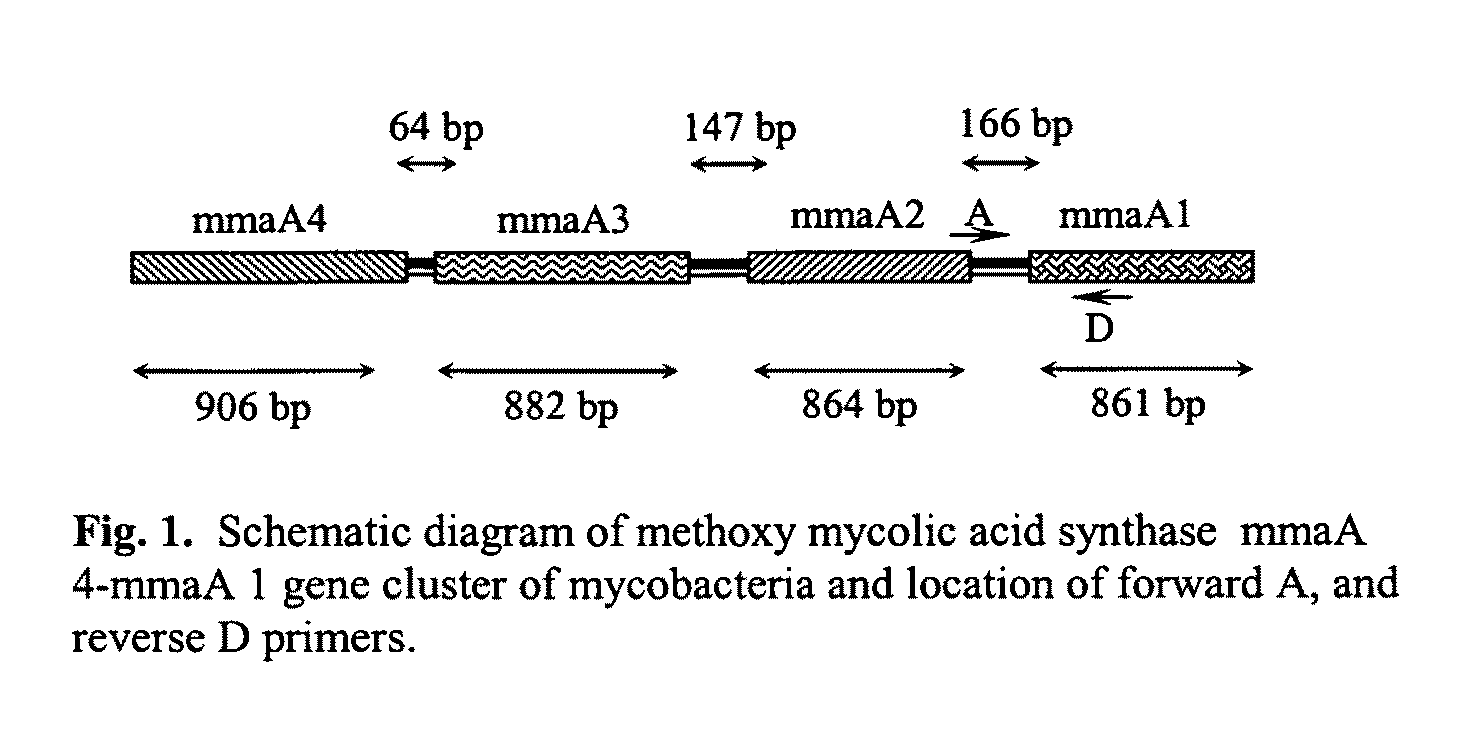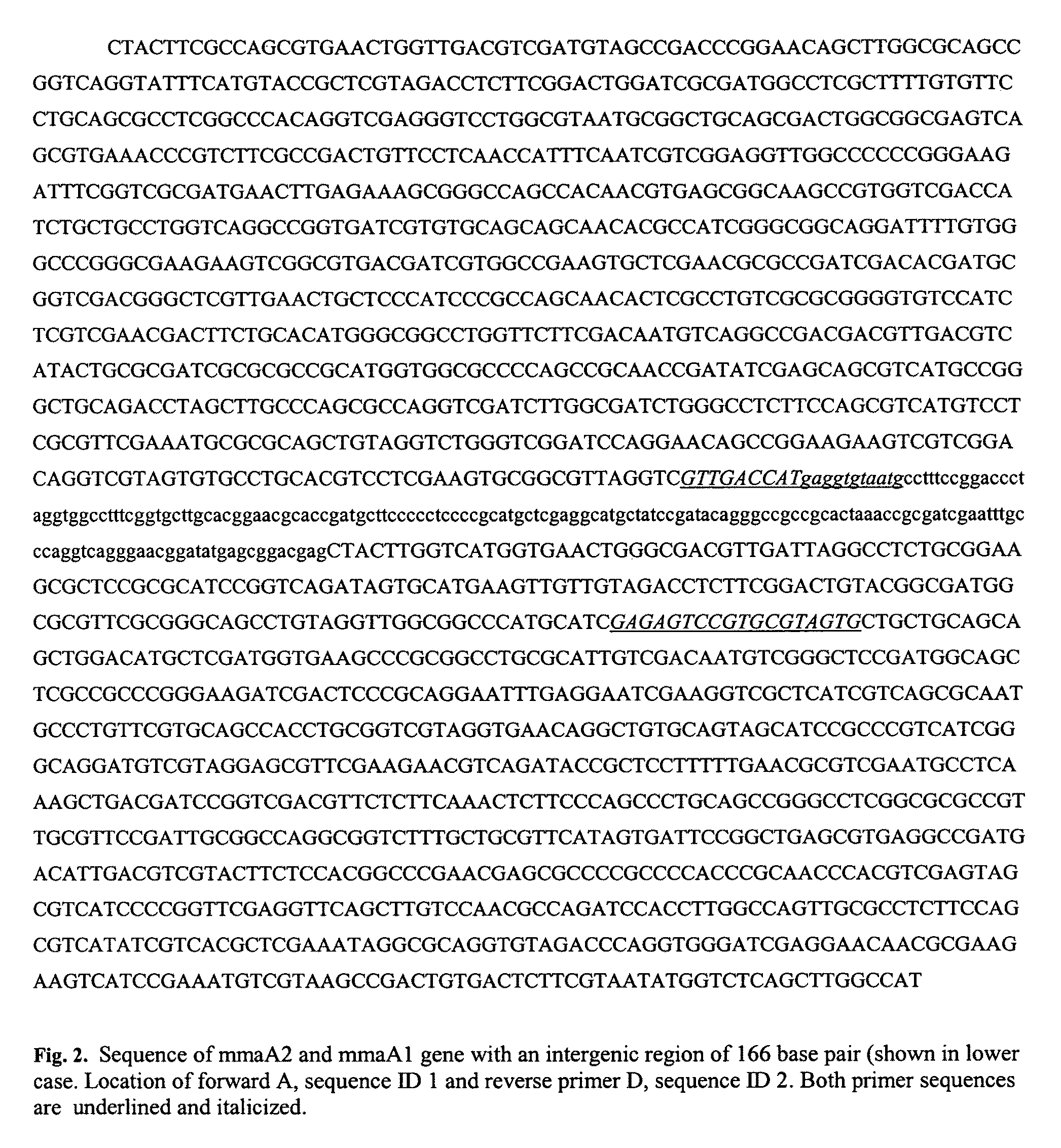Method for detecting pathogenic mycobacteria in clinical specimens
a clinical specimen and mycobacteria technology, applied in the field of detection of pathogenic mycobacteria in clinical specimens, can solve the problems of early tuberculosis that goes unrecognized in an otherwise healthy individual, lack of simple, rapid and reliable, and enormous problems for both individual patient management and implementation of appropriate infection control and public health measures
- Summary
- Abstract
- Description
- Claims
- Application Information
AI Technical Summary
Benefits of technology
Problems solved by technology
Method used
Image
Examples
example 1
Reagents
[0084]Trizma (Tris base), N-acetyl-L-Cysteine (NALC), Ethidium bromide, Agarose, K2HPO4, KH2PO4, Sodium Citrate, N lauryl Sarcosyl, EDTA, 2-Mercaptoethanol were purchased from Sigma Aldrich. USA.
[0085]Thermo-polymerase and dNTPs were obtained from New England Biolabs. USA.
[0086]Plasticwares were obtained from Axygen USA and Corning-Costar USA.
example 2
Collection and Processing of Clinical Specimens
[0087]Clinical specimens 142 sputum and one cerebrospinal fluid were obtained from patients in sterile specimen bottles at Ramakrishna Mission Free Tuberculosis Clinic Karol Bagh, New Delhi, India. Samples were either processed immediately whenever possible or stored at 4° C. overnight before processing.
[0088]Samples were processed by NALC—NaOH method. Approximately 1-3 ml Sputum was transferred to a 15 ml screw capped centrifuge tubes (Corming Costar Corp USA). To each sample added 1-3 ml of digestion decontamination buffer, mixed gently and let stand for 15 minutes at room temperature. Samples were diluted with 3 volumes of 0.67M phosphate buffer pH 6.8 and centrifuged at 3500 g for 15 min in a swing out rotor (Remi cetrifuge India). Sediments re-suspended in 300 ul sterile distilled water. One third of the processed samples was used for culture wherever required and another two third for PCR. The portion earmarked for PCR was i...
example 3
Preparation of Smear
[0090]Acid-fast staining was done using basic fuschin dyes by staining procedure of Zeihl-Neelsen. From the mucoid part of sputum a small part was smeared in 1×2 cm. area. Smear was briefly heat fixed, flooded with basic fuschin dye and heated briefly over Bunsen burner. De-stained with acid alcohol 3% sulfuric acid in 95% ethanol. Slides were washed with distilled water and counter-stained with methylene blue (0.3% methylene blue chloride) for 1-2 minutes. Rinsed with water and air-dried. Slides were examined under oil immersion objective at 400× with a binocular microscope (Zeiss, Germany). Smear were scored as per WHO guidelines.
PUM
| Property | Measurement | Unit |
|---|---|---|
| pH | aaaaa | aaaaa |
| temperature | aaaaa | aaaaa |
| temperature | aaaaa | aaaaa |
Abstract
Description
Claims
Application Information
 Login to View More
Login to View More - R&D
- Intellectual Property
- Life Sciences
- Materials
- Tech Scout
- Unparalleled Data Quality
- Higher Quality Content
- 60% Fewer Hallucinations
Browse by: Latest US Patents, China's latest patents, Technical Efficacy Thesaurus, Application Domain, Technology Topic, Popular Technical Reports.
© 2025 PatSnap. All rights reserved.Legal|Privacy policy|Modern Slavery Act Transparency Statement|Sitemap|About US| Contact US: help@patsnap.com



